

Articles
How To Store Yogurt
Modified: January 8, 2024
Learn the best methods for storing yogurt to keep it fresh and delicious. Discover tips and tricks in our informative articles.
(Many of the links in this article redirect to a specific reviewed product. Your purchase of these products through affiliate links helps to generate commission for Storables.com, at no extra cost. Learn more)
Introduction
Yogurt is a popular and nutritious food that is enjoyed by millions of people around the world. This versatile dairy product can be consumed on its own, used as a topping or ingredient in various dishes, or even incorporated into smoothies and desserts. However, to ensure that yogurt remains fresh and delicious, it is crucial to store it properly.
Proper yogurt storage not only helps maintain its taste and texture but also prevents spoilage and the growth of harmful bacteria. By following a few simple guidelines, you can extend the shelf life of your yogurt and enjoy its health benefits for longer periods.
In this article, we will explore the importance of proper yogurt storage, the factors to consider when choosing the right yogurt container, and the ideal methods for refrigeration. We will also discuss how to prevent temperature fluctuations, cross-contamination, and other tips to maintain yogurt freshness. Whether you prefer store-bought or homemade yogurt, these guidelines will help you store it correctly to preserve its quality.
Key Takeaways:
- Proper yogurt storage is essential to maintain its taste, texture, and nutritional value. Refrigeration, choosing the right container, and avoiding temperature fluctuations are key to preserving yogurt’s freshness and health benefits.
- Extending the shelf life of yogurt can be achieved by refrigeration, using clean utensils, and opting for single-serve containers. Freezing yogurt for long-term storage and proper disposal of expired yogurt are also essential practices.
Read more: How To Store Frozen Yogurt
Understanding the Importance of Proper Yogurt Storage
Proper yogurt storage is essential to maintain its freshness, taste, and nutritional value. Yogurt contains live cultures, specifically beneficial bacteria, such as Lactobacillus and Bifidobacterium, which are responsible for its unique tangy flavor and numerous health benefits.
One of the main reasons for storing yogurt correctly is to ensure that these live cultures remain active and viable. These bacteria are responsible for fermenting the milk and transforming it into yogurt. They help improve digestion, boost the immune system, promote gut health, and may even have anti-inflammatory properties.
When yogurt is exposed to unfavorable conditions, such as improper temperatures or contamination, the live cultures can degrade, resulting in decreased health benefits and a negative impact on the taste and texture of the yogurt. For optimal results, it is important to understand the key factors that influence yogurt storage.
Temperature is a critical factor in yogurt storage. Yogurt should be kept at a stable and cool temperature, ideally between 32°F (0°C) and 39°F (4°C). This range is important to slow down the growth of harmful bacteria while allowing the beneficial bacteria to thrive. Storing yogurt at higher temperatures can lead to faster spoilage and a shorter shelf life.
Another important consideration is avoiding temperature fluctuations. Yogurt should be stored in a refrigerator where the temperature remains consistent. Fluctuating temperatures can affect the consistency and quality of the yogurt, potentially leading to separation or a grainy texture. It is advisable to keep yogurt away from the refrigerator door, as it experiences more temperature fluctuations compared to the main compartments.
Cross-contamination is also a concern when it comes to yogurt storage. Yogurt should always be stored in a clean container with a secure, airtight lid. This helps prevent the transfer of odors and flavors from other foods in the refrigerator. Additionally, it is best to keep raw meat, poultry, and seafood products separate from yogurt to avoid any potential contamination.
By understanding the importance of proper yogurt storage, you can maintain the integrity of the live cultures, ensure a longer shelf-life, and enjoy the delicious taste and health benefits of yogurt to their fullest extent.
Choosing the Right Yogurt Container
When it comes to storing yogurt, choosing the right container is essential to maintain its freshness and quality. The container you select should provide adequate protection from outside elements while allowing the yogurt to breathe.
One popular option for yogurt storage is glass containers. Glass is non-reactive, meaning it will not interact with the yogurt or alter its taste. It also helps preserve the texture and consistency of the yogurt. Glass containers are also easy to clean and reusable, making them a sustainable choice for storage.
Another common choice is plastic containers. When selecting plastic containers, it is important to choose food-grade, BPA-free containers. BPA (Bisphenol A) is a chemical that can leach into food and may have adverse health effects. Look for containers labeled as BPA-free to ensure the safety of your yogurt.
Plastic containers are lightweight, affordable, and easily available. They are also durable and less prone to breakage compared to glass containers. However, plastic containers may retain odors and flavors from previous food items, so proper cleaning and storage is essential to prevent cross-contamination.
If you prefer individual servings of yogurt, single-serve containers are a convenient option. These small, portion-sized containers come with pre-measured servings and are ideal for on-the-go consumption. However, keep in mind that single-serve containers may contribute to more plastic waste in the long run.
No matter which type of container you choose, it is crucial to ensure that it has a tight-fitting lid. A secure lid helps prevent air exposure and protects the yogurt from potential contamination. It also helps maintain the yogurt’s freshness and prevents unwanted odors from seeping into the yogurt.
Ultimately, the choice of a yogurt container depends on personal preference, convenience, and sustainability considerations. Whether you opt for glass or plastic containers, make sure they are clean, well-sealed, and appropriate for food storage to maintain the quality and integrity of your yogurt.
Refrigeration: The Ideal Storage Method
Refrigeration is the ideal storage method for yogurt, as it helps maintain its freshness, texture, and flavor. The cold temperatures of the refrigerator slow down bacterial growth, preserving the integrity of the yogurt and extending its shelf life.
When storing yogurt in the refrigerator, there are a few key considerations to keep in mind. First, ensure that the temperature remains consistent and falls within the optimal range of 32°F (0°C) to 39°F (4°C). This range allows the beneficial bacteria in the yogurt to thrive while minimizing the growth of harmful bacteria that can cause spoilage.
It’s important to note that different areas of the refrigerator have different temperature zones. The door of the refrigerator experiences more temperature fluctuations due to frequent opening and closing, making it less suitable for storing delicate items like yogurt. Instead, place your yogurt containers in the main compartments of the refrigerator to maintain a more stable temperature.
When storing yogurt in the refrigerator, it is best to keep it towards the back of the shelves, where the temperature tends to be coldest and most consistent. This helps ensure that the yogurt remains at an optimal temperature throughout its storage period.
Additionally, it is advisable to avoid stacking containers on top of each other, as this can result in uneven cooling and may affect the texture of the yogurt. Try to arrange the yogurt containers in a single layer, leaving some space between them to allow for proper air circulation.
If you have opened a large container of yogurt but only plan to consume a portion of it, transfer the remaining yogurt into a smaller, airtight container before storing it in the refrigerator. This helps minimize exposure to air and potential contamination, keeping the yogurt fresh for a longer period.
It’s worth noting that while refrigeration is the preferred method for storing yogurt, freezing yogurt is also an option. Freezing can extend the shelf life of yogurt, but it may change the texture and consistency. When thawed, the yogurt may become slightly watery or grainy. If you decide to freeze yogurt, use freezer-safe containers and consume it within a few months for the best quality.
By following these refrigeration guidelines, you can ensure that your yogurt stays fresh, maintains its taste and texture, and remains safe for consumption. Refrigeration provides an optimal storage environment to preserve the integrity of the yogurt and allows you to enjoy its health benefits for an extended period.
Avoiding Temperature Fluctuations
Avoiding temperature fluctuations is crucial when it comes to properly storing yogurt. Fluctuating temperatures can negatively impact the texture, taste, and quality of the yogurt. To maintain the integrity of your yogurt, here are some tips to follow:
1. Keep yogurt away from temperature-sensitive areas: It’s important to store yogurt away from areas in the kitchen that can experience significant temperature changes. Avoid placing yogurt near stovetops, ovens, or windows where direct sunlight can cause temperature fluctuations. These areas can expose the yogurt to excess heat, which can lead to spoilage or separation.
2. Don’t leave yogurt out for extended periods: Leaving yogurt out at room temperature for too long can result in temperature fluctuations. It is advisable to only take out the amount of yogurt you plan to consume and return the rest to the refrigerator promptly. Avoid leaving yogurt sitting out for more than two hours to minimize the risk of bacteria growth.
3. Avoid frequent temperature changes: Opening and closing the refrigerator door frequently can cause temperature fluctuations inside. This can affect the consistency and freshness of the yogurt. Try to minimize the number of times you open the refrigerator door, and avoid keeping it open for extended periods. This practice will help maintain a stable temperature for your yogurt.
4. Be cautious when transporting yogurt: If you need to transport yogurt, especially during warmer months, take measures to keep it at a consistent temperature. Consider using an insulated bag or cooler with ice packs to prevent temperature fluctuations. Keep the yogurt container sealed and avoid exposing it to direct sunlight or excessive heat during transit.
5. Be mindful of power outages: During power outages, it’s crucial to keep the refrigerator door closed as much as possible to maintain a stable temperature. A fully stocked refrigerator can keep food, including yogurt, cold for up to four hours if the door remains closed. If the power outage lasts longer, and you’re unsure about the safety of your yogurt, it’s best to discard it to avoid the risk of spoilage or contamination.
By taking these precautions, you can help ensure that your yogurt remains at a stable temperature. Avoiding temperature fluctuations will contribute to maintaining the quality and freshness of the yogurt, allowing you to enjoy its delicious taste and benefits to the fullest extent.
Read more: How To Store Yogurt Bark
Preventing Cross-Contamination
Preventing cross-contamination is crucial when it comes to properly storing yogurt and ensuring its safety for consumption. Cross-contamination occurs when harmful bacteria from one food item are transferred to another, potentially leading to foodborne illnesses. To prevent cross-contamination and maintain the quality of your yogurt, here are some key practices to follow:
1. Store yogurt separately: When storing yogurt in the refrigerator, keep it separated from raw meat, poultry, seafood, and other potentially high-risk foods. This separation helps minimize the risk of any bacteria or juices from the other foods coming into contact with the yogurt. Ideally, store your yogurt containers on a separate shelf or in a designated area of the refrigerator.
2. Use separate utensils: When serving yogurt, use clean utensils and avoid using the same ones that have been in contact with other foods. If you’re using a spoon or knife that has been used for other items, thoroughly wash it before scooping yogurt to prevent any cross-contamination.
3. Clean and sanitize storage containers: Before storing yogurt, ensure that the containers are clean and sanitized. Wash the containers with hot, soapy water and rinse them well to remove any residue or bacteria. If using reusable containers, sanitize them periodically to maintain hygiene. This step helps eliminate the risk of any leftover bacteria from previous uses contaminating the yogurt.
4. Prevent contact with juices or drippings: When storing yogurt, make sure the container is tightly sealed to prevent any juices or drippings from other foods from coming into contact with the yogurt. This can be achieved by using a container with a secure lid that forms an airtight seal. It’s also important to place yogurt containers on a stable surface to prevent leakage or accidental contact.
5. Regularly clean the refrigerator: Cleaning your refrigerator regularly is essential to prevent cross-contamination. Wipe down surfaces with a mild cleaning solution or vinegar to remove any spills, stains, or potential bacteria. Pay close attention to the areas where yogurt is stored, ensuring that there are no lingering odors or contaminants.
6. Practice good personal hygiene: When handling yogurt, practicing good personal hygiene is essential. Wash your hands thoroughly with soap and water before and after handling yogurt to reduce the risk of transferring bacteria. This step helps prevent cross-contamination from your hands to the yogurt and vice versa.
By implementing these practices, you can minimize the risk of cross-contamination and maintain the safety and quality of your yogurt. Preventing the transfer of harmful bacteria helps ensure that your yogurt remains a delicious and healthy food option.
Store yogurt in the coldest part of the fridge, usually the back. Keep it tightly sealed to prevent absorption of other odors and consume within the expiration date for best quality.
Maintaining Yogurt Freshness
Maintaining the freshness of yogurt is essential to ensure its taste, texture, and quality. Fresh yogurt not only enhances the overall enjoyment of the food but also ensures that it provides the maximum health benefits. Here are some tips to help you maintain the freshness of your yogurt:
1. Check the expiration date: When purchasing yogurt, always check the expiration date on the container. Choose yogurt with a longer shelf life to ensure that it remains fresh for a longer period. Using yogurt before its expiry date guarantees the best taste and quality.
2. Keep the lid tightly sealed: Properly sealing the yogurt container after each use is crucial in maintaining its freshness. Oxygen exposure can lead to the growth of bacteria that cause spoilage. Make sure the lid is tightly closed to prevent air from entering the container and degrading the yogurt’s taste and texture.
3. Avoid double-dipping: When serving yogurt, refrain from double-dipping utensils or hands into the container. Each time the yogurt comes into contact with foreign objects, it increases the risk of introducing bacteria that can accelerate spoilage. Use clean utensils to transfer the desired amount of yogurt to avoid compromising its freshness.
4. Store yogurt away from strong odors: Yogurt has a porous texture, which makes it susceptible to absorbing odors from other foods in the refrigerator. To maintain the fresh taste of yogurt, store it in an area of the refrigerator away from strong-smelling items, such as onions, garlic, and certain cheeses. This prevents the transfer of flavors and odors, preserving the yogurt’s natural taste.
5. Keep yogurt away from raw meat and fish: Raw meat and fish can harbor bacteria that pose a risk of contamination. To maintain the freshness of your yogurt, store it separately from these raw items. If possible, place yogurt on a shelf above raw meat or fish to prevent any potential dripping or cross-contamination.
6. Avoid temperature fluctuations: As mentioned earlier, temperature fluctuations can adversely affect yogurt freshness. Refrigerate the yogurt promptly and store it at a consistent temperature within the recommended range of 32°F (0°C) to 39°F (4°C). This prevents the growth of harmful bacteria and helps to preserve the yogurt’s quality for a longer period.
7. Consume yogurt within a reasonable time frame: While yogurt can have a relatively long shelf life, it is best to consume it within a reasonable time frame after opening. Check the label for guidelines on how long the yogurt remains fresh once opened. Consuming yogurt within the recommended timeframe ensures that you enjoy it at its peak freshness.
By following these tips, you can maintain the freshness of your yogurt, ensuring that it remains delicious and retains its nutritional benefits. Paying attention to proper storage and consumption practices will help you enjoy yogurt at its best for a more prolonged period.
Storage Tips for Different Types of Yogurt
Yogurt comes in various forms and flavors, each with its unique characteristics and storage requirements. Here are some storage tips for different types of yogurt to help maintain their quality and freshness:
1. Regular Yogurt: Regular yogurt, whether plain or flavored, should be stored in the refrigerator at a temperature between 32°F (0°C) and 39°F (4°C). Keep the yogurt container tightly sealed to prevent air exposure and maintain its freshness. Consume opened regular yogurt within 7-10 days for optimal taste and texture.
2. Greek Yogurt: Greek yogurt is thicker and creamier than regular yogurt due to its strained consistency. Store unopened Greek yogurt in the refrigerator, following the same temperature guidelines as regular yogurt. Opt for individual-sized cups or larger containers based on your consumption needs. Once opened, consume Greek yogurt within a week to preserve freshness.
3. Yogurt Drinks: Yogurt drinks, such as lassi or kefir, are liquid forms of yogurt. These drinks should also be refrigerated at the same temperature range as regular yogurt. Shake the yogurt drink well before consuming to ensure even distribution of flavors. Consume opened yogurt drinks within a few days to maintain their freshness.
4. Probiotic Yogurt: Probiotic yogurt contains added live cultures and beneficial bacteria. To maintain the viability of these live cultures, it is essential to store probiotic yogurt in the refrigerator at the recommended temperature. Check the packaging for any specific storage instructions provided by the manufacturer.
5. Dairy-Free Yogurt Alternatives: Dairy-free yogurt alternatives, such as soy, almond, or coconut yogurt, have become popular options for individuals with dietary restrictions or preferences. Similar to regular yogurt, these alternatives should be stored in the refrigerator, following the temperature guidelines. Make sure to seal the containers tightly to maintain their freshness and prevent any flavor transfer.
6. Frozen Yogurt: Frozen yogurt can be stored in the freezer for an extended period due to its lower water content compared to regular yogurt. Ensure that the frozen yogurt is stored in a well-sealed container to prevent the formation of ice crystals or freezer burn. Consume frozen yogurt within a few months for the best quality and taste.
7. Homemade Yogurt: If you make your own yogurt at home, store it in clean, airtight containers in the refrigerator. Homemade yogurt should be consumed within a week for optimal freshness. Label the containers with the date they were made to keep track of their freshness.
Remember to always check the product packaging for any specific storage instructions provided by the manufacturer. Following the appropriate storage tips for different types of yogurt will help preserve their flavor, texture, and nutritional properties for an enjoyable and healthy yogurt experience.
Storing Homemade Yogurt
Homemade yogurt is a delicious and nutritious treat that requires proper storage to maintain its freshness and quality. Whether you make yogurt using a yogurt maker, stovetop method, or an Instant Pot, here are some tips for storing homemade yogurt:
1. Transfer to airtight containers: After the yogurt has finished fermenting, transfer it to clean, airtight containers for storage. Glass jars or food-grade plastic containers with tightly sealed lids are ideal for storing homemade yogurt. Make sure the containers are cleaned and sanitized before use to prevent any potential contaminants.
2. Allow the yogurt to cool: Before sealing the containers, allow the homemade yogurt to cool to room temperature. This helps prevent condensation from forming inside the containers, which can affect the texture and consistency of the yogurt. Placing warm yogurt directly in the refrigerator can also lead to temperature fluctuations, so it’s important to cool it down first.
3. Label and date the containers: To keep track of the freshness of your homemade yogurt, label each container with the date it was made. This will help you prioritize consumption based on freshness and prevent the yogurt from sitting in the refrigerator for too long. Homemade yogurt typically stays fresh for about 7-10 days when stored properly.
4. Refrigerate promptly: Once the homemade yogurt has cooled and been properly sealed in containers, place it in the refrigerator promptly. Keep the yogurt in the main compartments of the refrigerator where the temperature is most consistent. Avoid storing homemade yogurt on the refrigerator door, as it is subjected to more fluctuations in temperature.
5. Avoid mixing in flavors or toppings immediately: If you plan to add fruits, sweeteners, or toppings to your homemade yogurt, it is best to do so just before serving. Adding these additional ingredients ahead of time can affect the texture and freshness of the yogurt. Store the plain yogurt separately and customize each serving to your liking when ready to enjoy.
6. Monitor for any signs of spoilage: While homemade yogurt can stay fresh for about a week, it’s important to monitor it for any signs of spoilage. If you notice a foul smell, mold, or any other unusual discoloration, it’s best to discard the yogurt to avoid the risk of foodborne illness.
By following these storage tips, you can enjoy the deliciousness of your homemade yogurt for a longer period. Proper storage ensures that the yogurt retains its taste, texture, and beneficial properties, allowing you to savor the goodness of homemade yogurt with each serving.
Read more: How To Make Yogurt Slow Cooker
Extending Yogurt Shelf Life
Yogurt is a perishable food item that typically has a limited shelf life. However, with proper storage and a few techniques, you can extend the shelf life of yogurt to enjoy it for a longer period. Here are some tips to help extend the shelf life of your yogurt:
1. Check the expiration date: When purchasing yogurt, always check the expiration date on the container. Choose yogurt with a later expiration date to allow for more time before it begins to spoil. This gives you a head start in extending its shelf life.
2. Keep the yogurt refrigerated: Refrigeration is essential in preserving the freshness of yogurt. Store yogurt in the refrigerator at a temperature between 32°F (0°C) and 39°F (4°C). Cold temperatures slow down bacterial growth and help maintain the quality of the yogurt. Be sure to return the yogurt to the refrigerator promptly after each use.
3. Store in the proper part of the refrigerator: To further extend the shelf life of yogurt, store it in the main compartments of the refrigerator where the temperature is most consistent. Avoid storing yogurt on the refrigerator door, as it is exposed to temperature fluctuations caused by frequent opening and closing. The back of the refrigerator shelves tends to be colder and is an ideal spot for storing yogurt.
4. Use clean utensils: When serving yogurt, always use clean utensils to prevent introducing bacteria into the container. Avoid double-dipping utensils that have touched your mouth or other food items, as this can lead to contamination and spoilage. Clean utensils ensure that the remaining yogurt stays fresh for longer.
5. Opt for single-serve containers: If you have a tendency to not finish a larger container of yogurt before it spoils, consider buying single-serve containers instead. These smaller portions allow you to consume yogurt in one sitting without worrying about leftovers that may expire before you get a chance to enjoy them. Single-serve containers also reduce the risk of cross-contamination.
6. Do not contaminate the yogurt: Preventing cross-contamination is crucial in extending the shelf life of yogurt. Avoid introducing foreign objects or contaminants into the yogurt container. Seal the container tightly after each use to preserve its freshness and prevent exposure to air and potential sources of bacteria.
7. Freeze yogurt for long-term storage: Freezing yogurt is an effective way to extend its shelf life for up to several months. Transfer the yogurt into freezer-safe containers or ice cube trays for portioning. When ready to consume, thaw the frozen yogurt in the refrigerator overnight. Keep in mind that the texture may change slightly after freezing, but the taste and nutritional value will remain intact.
It’s important to note that while these tips can help extend the shelf life of yogurt, it is always essential to use your best judgment when consuming yogurt beyond its expiration date or if there are any signs of spoilage. Trust your senses and discard any yogurt that looks or smells off to avoid the risk of foodborne illness.
By following these guidelines, you can extend the shelf life of your yogurt, reducing waste and ensuring that you can enjoy this nutritious and delicious food for a longer period of time.
Conclusion
Proper storage of yogurt is crucial in maintaining its freshness, taste, and quality. By following the tips outlined in this article, you can ensure that your yogurt remains delicious, nutritious, and safe for consumption.
Understanding the importance of proper yogurt storage, such as refrigeration at a consistent temperature, helps to preserve the beneficial live cultures that give yogurt its health benefits. Choosing the right yogurt container, whether it’s glass or BPA-free plastic, ensures that the yogurt is stored in a suitable and non-reactive environment.
Avoiding temperature fluctuations and cross-contamination are essential practices that help prevent spoilage and bacterial growth. By storing yogurt away from temperature-sensitive areas and keeping it separate from raw meats and fish, you can maintain the freshness and safety of the yogurt.
To preserve the freshness of homemade yogurt, transferring it to airtight containers, allowing it to cool before sealing, and consuming it within a week are recommended. Extending the shelf life of yogurt can be achieved by checking the expiration dates, refrigerating promptly, and using clean utensils.
Ultimately, by implementing these storage tips, you can enjoy your favorite yogurt varieties, including regular, Greek, probiotic, and dairy-free options, for a longer period. Taking proper care of your yogurt not only ensures its taste and quality but also reduces waste and allows you to fully appreciate its nutritional benefits.
Remember to always check the product packaging for any specific storage instructions provided by the manufacturer. By following these guidelines and incorporating them into your routine, you can savor the goodness of yogurt and enjoy its many health benefits with each serving.
So, whether you prefer store-bought or homemade yogurt, make sure to store it correctly to maintain its freshness and quality. Embrace these storage practices, and indulge in the goodness of yogurt while taking care of your health.
Frequently Asked Questions about How To Store Yogurt
Was this page helpful?
At Storables.com, we guarantee accurate and reliable information. Our content, validated by Expert Board Contributors, is crafted following stringent Editorial Policies. We're committed to providing you with well-researched, expert-backed insights for all your informational needs.
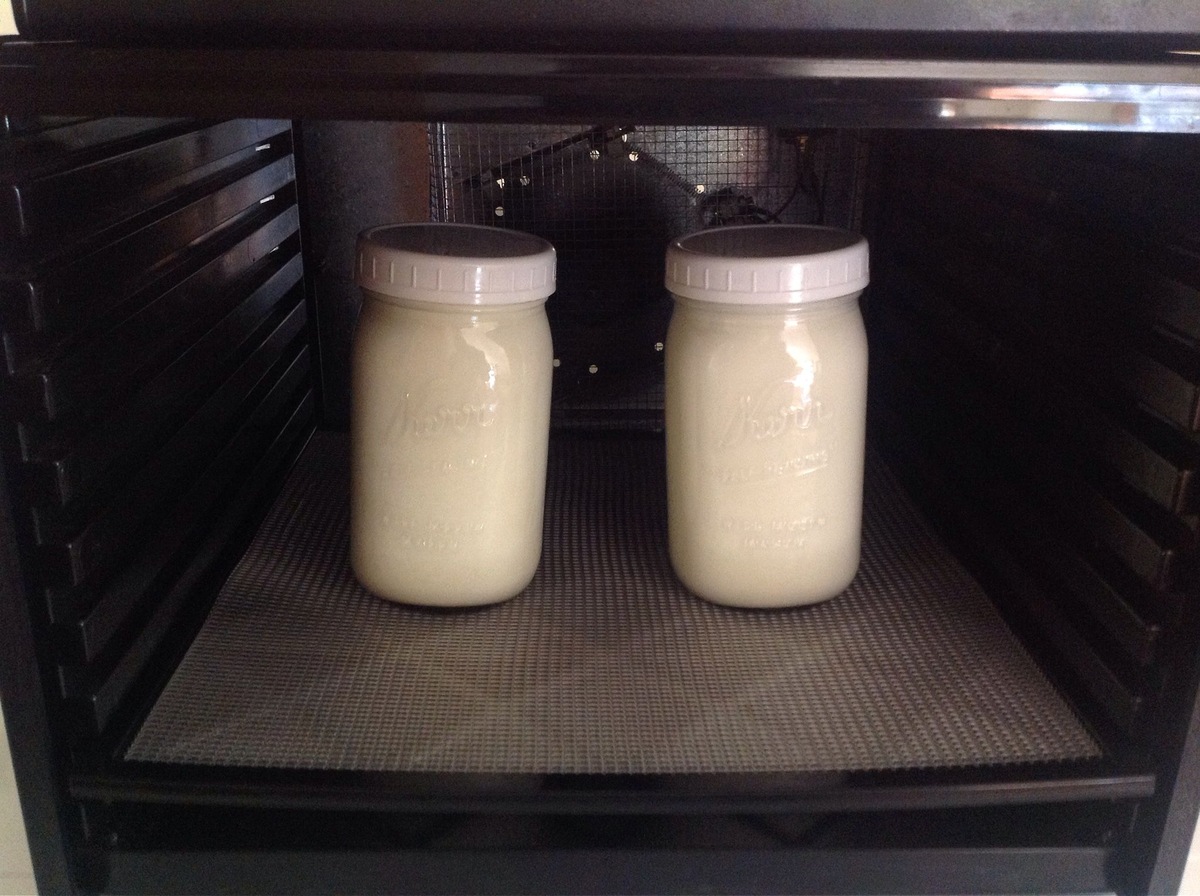


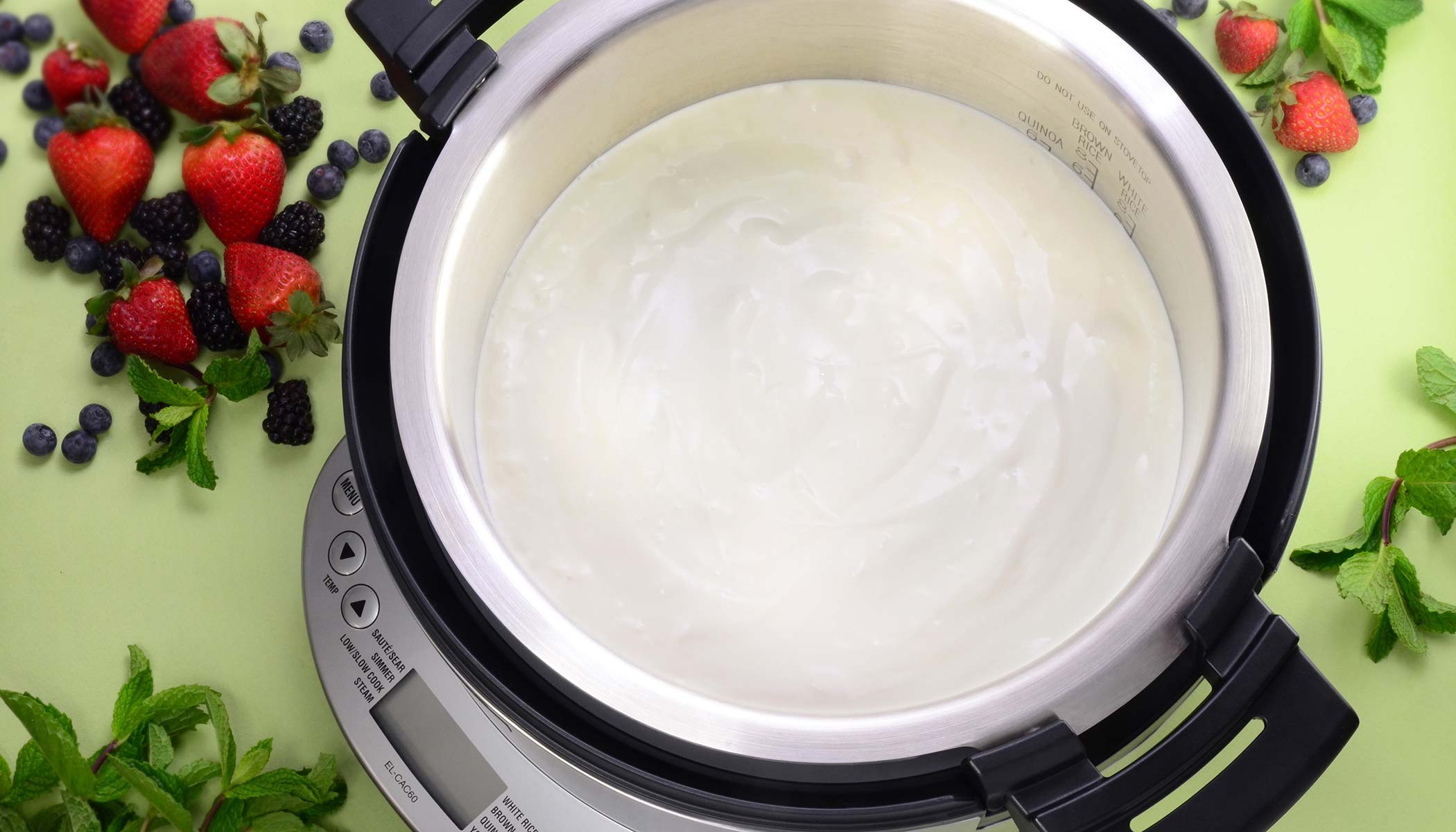
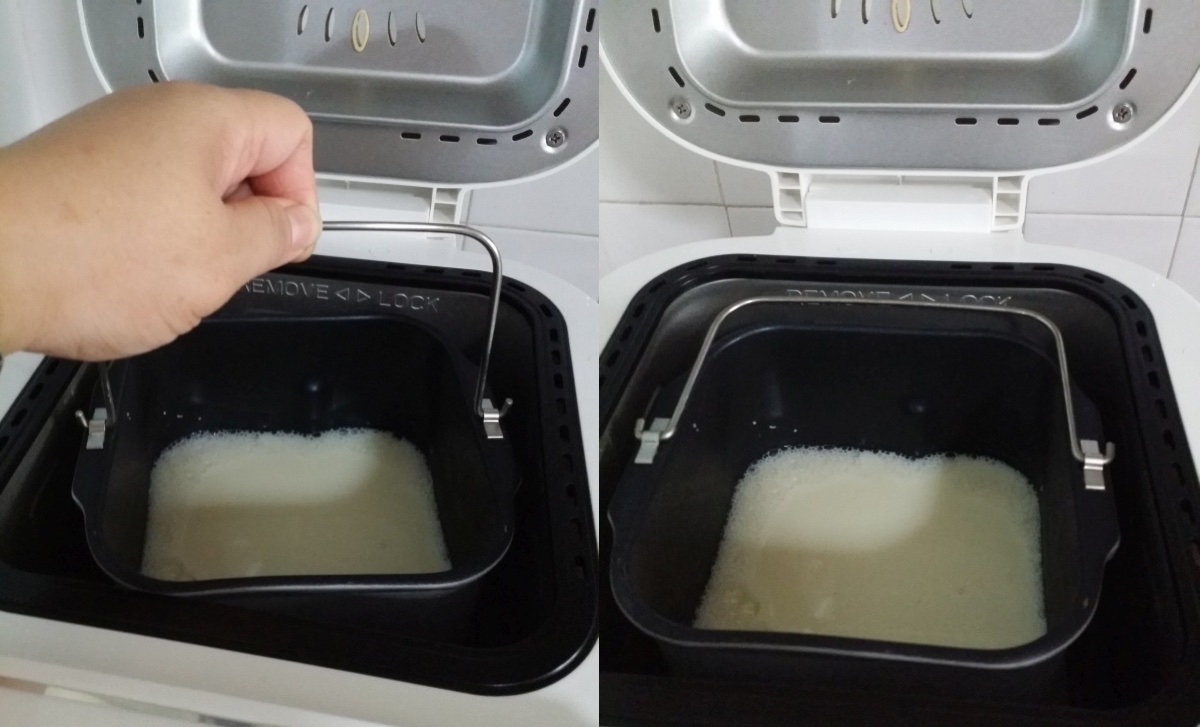

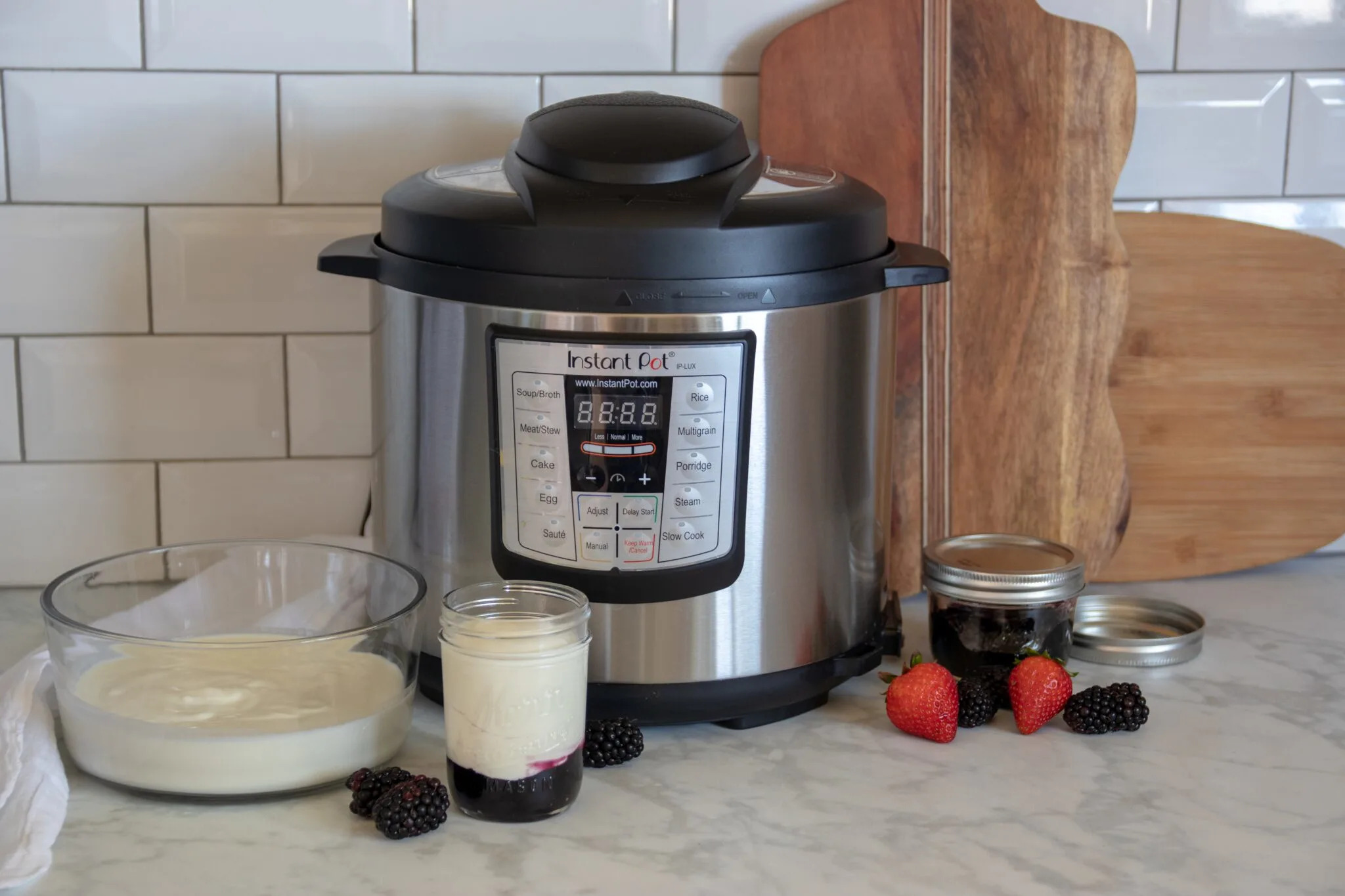

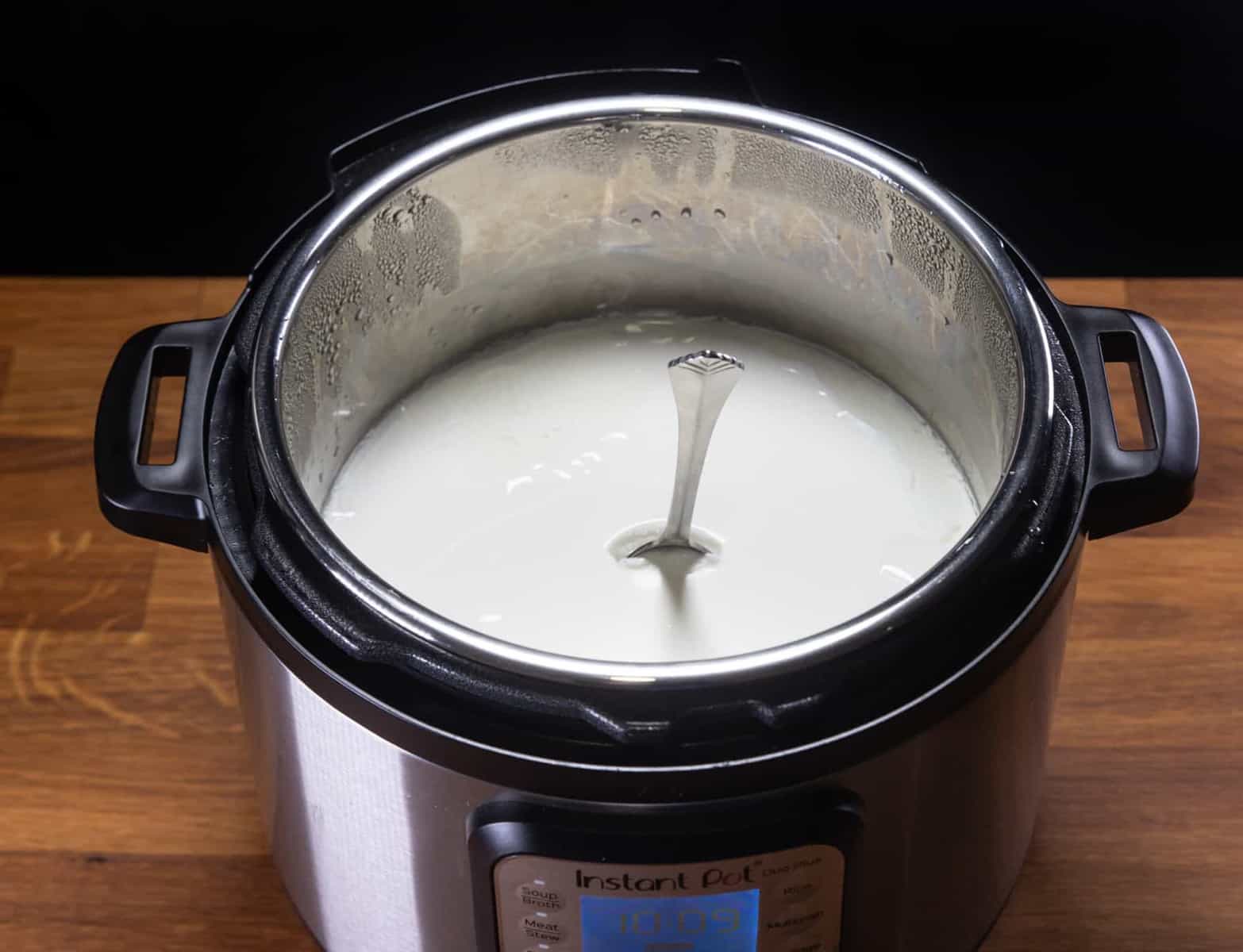





0 thoughts on “How To Store Yogurt”